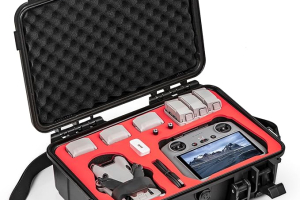Carrying Drones on Planes: Tips and Regulations for Safely Transporting Drones via Air Travel
Drones have soared in popularity for both recreational and professional purposes. Whether you’re a hobbyist capturing stunning aerial photos or a professional using drones for business, understanding the regulations and best practices for transporting drones via air travel is crucial. This article provides comprehensive tips and guidelines to ensure your drone arrives safely and in compliance with all regulations.
Pre-Travel Preparation
Research Airline Policies
Before booking your flight, it's essential to research and understand the specific policies of your airline regarding drones. Most airlines allow drones, but policies on carrying them in checked or carry-on luggage can vary. Checking these policies in advance can prevent any surprises at the airport.
Battery Regulations
Lithium batteries, commonly used in drones, are subject to stringent regulations due to their potential fire risk. The Federal Aviation Administration (FAA) mandates that lithium batteries must be carried in carry-on luggage. Batteries should be protected to prevent short circuits, such as placing them in battery cases or covering terminals with tape【source: FAA】.
Packing Your Drone
Proper packing is crucial to protect your drone during transit. Use a sturdy, well-padded drone case designed to absorb shocks and protect delicate parts like propellers and cameras. Carrying documentation, such as registration and permits, can also be beneficial if questioned by security or customs.
At the Airport
Security Screening
When passing through security, you’ll need to remove your drone and its batteries from your bag for screening. The Transportation Security Administration (TSA) is familiar with drones, but it’s always helpful to arrive early and be prepared for additional screening if needed.
Carry-On vs. Checked Luggage
Deciding whether to carry your drone in your carry-on or checked luggage can be tricky. Carry-on is generally safer for the drone and its batteries, reducing the risk of damage or loss. However, if your drone is too large, checked luggage may be your only option. If checking your drone, ensure it is well-protected and securely packed.
Regulations by Destination
Domestic Travel
For domestic flights within the United States, the FAA provides clear guidelines for transporting drones. The FAA requires drone operators to follow specific rules, such as registering drones that weigh between 0.55 and 55 pounds. Additionally, FAA guidelines for lithium batteries must be adhered to during air travel【source: FAA】.
International Travel
International travel with a drone requires extra diligence. Many countries have strict regulations regarding drone use and transport. For example, Canada, Australia, and Japan have specific laws that travelers must comply with. Research the drone laws of your destination country thoroughly to avoid fines or confiscation.
In-Flight Considerations
Drone Storage
During the flight, store your drone in an overhead bin or under the seat in front of you, depending on its size and the airline’s policies. Inform flight attendants if you have any concerns or if special arrangements are needed.
In-Flight Battery Care
Monitor your drone batteries during the flight. Keep them in your carry-on and ensure they are not damaged or overheating. Avoid storing batteries near heat sources or in locations where they might be punctured or crushed.
Post-Arrival
Inspecting Your Drone
After arriving at your destination, inspect your drone for any damage that might have occurred during transit. Check the propellers, camera, and other delicate parts to ensure everything is in working order.
Complying with Local Laws
Once you’ve arrived, familiarize yourself with local drone regulations. Each country and sometimes regions within countries have different laws regarding where and how drones can be used. Complying with these regulations ensures a safe and legal flying experience.
Understanding and complying with regulations for transporting drones via air travel is essential for a smooth and hassle-free experience. By following the tips and guidelines outlined in this article, you can ensure that your drone arrives safely and ready for use. Remember to always travel responsibly and stay informed about the latest regulations to avoid any issues.
For the latest deals and product news, sign up for our newsletter
Amazon Associates Disclosure
loadyourgear.com is a participant in the Amazon Services LLC Associates Program, an affiliate advertising program designed to provide a means for sites to earn advertising fees by advertising and linking to amazon.com.
All content © 2023 loadyourgear.com & PixelProjects

